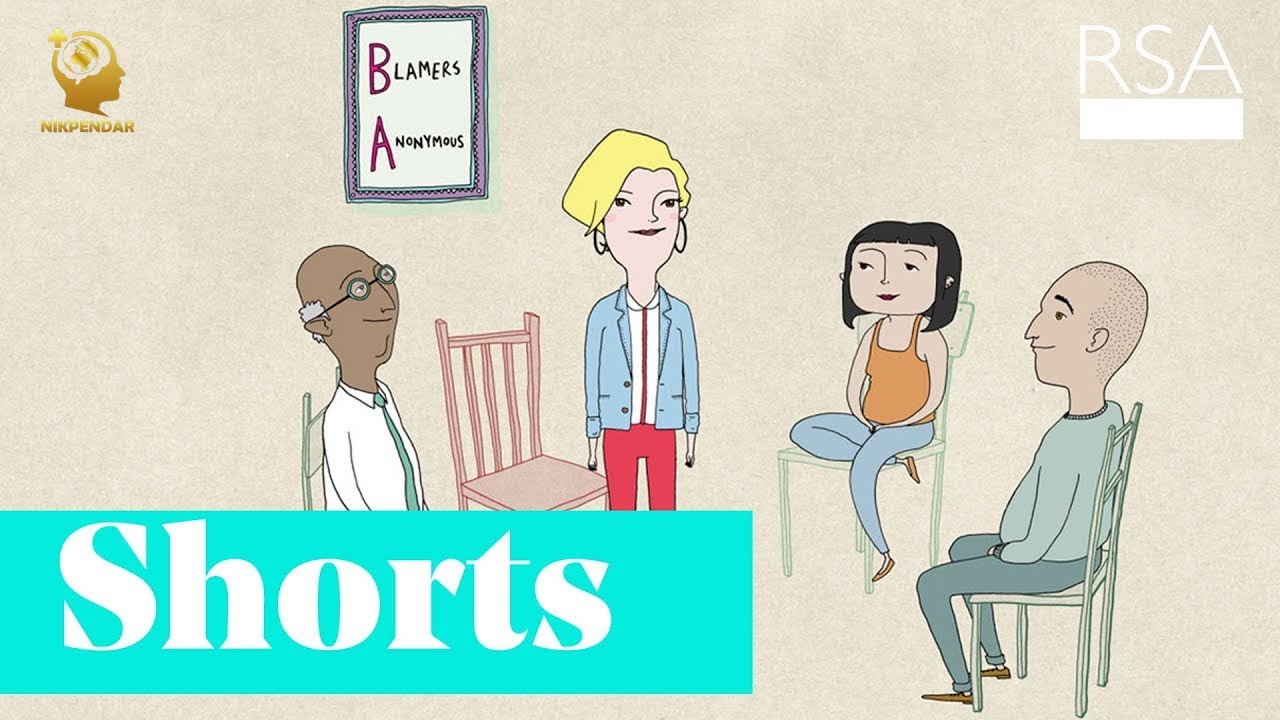
Beginner
Task 1: What is Empathy?
Look at the picture of someone in a hole. The speaker talks about someone climbing down into the hole.
- What does this picture tell you about empathy?
- What does the speaker say empathy is feeling?
Task 2: Sympathy and “At Least…”
The speaker says sympathy often uses the words “at least.”
- Give an example of something someone might say with “at least.”
- Why does the speaker say “at least” is not a good start to an empathic response?
Intermediate
Task 1: Empathy vs. Sympathy in Your Words
The speaker gives a clear difference between empathy and sympathy.
- In your own words, explain the main difference between empathy and sympathy.
- Think of a time someone showed you empathy or sympathy. Describe the situation and how you felt.
Task 2: Avoiding “At Least…”
The speaker highlights how often we try to “silver lining” difficult situations with phrases like “at least.”
- Why do people often use “at least” when someone shares something painful?
- What does the speaker suggest saying instead when you don’t know what to say in a difficult conversation? Why is this better?
Advanced
Task 1: The Four Qualities of Empathy
Theresa Wiseman identified four qualities of empathy: perspective-taking, staying out of judgment, recognizing emotion, and communicating that emotion.
- Choose two of these qualities and explain their importance in fostering genuine connection.
- Discuss a real-life scenario where one of these qualities would be particularly challenging to practice, and suggest strategies to overcome that difficulty.
Task 2: The Paradox of “Making Things Better”
The speaker states, “Rarely can a response make something better. What makes something better is connection.”
- Analyze this statement in the context of the entire transcript. Why is focusing on connection more effective than trying to “make things better” when someone shares a difficult experience?
- Reflect on a situation where you witnessed or experienced an attempt to “make things better” that fell short. What was the impact, and how could an empathic approach have changed the outcome?
Beginner
Task 1: Empathy or Sympathy?
Listen to the speaker explain empathy and sympathy.
- Does empathy connect people or disconnect them?
- Does sympathy connect people or disconnect them?
Task 2: “At Least…”
The speaker talks about when people say “At least…”
- Is “At least…” an empathetic response? (Yes/No)
- Give one example from the transcript of someone saying “At least…”
Intermediate
Task 1: The Four Qualities of Empathy
Listen carefully when the speaker talks about the four qualities of empathy, as described by Theresa Wiseman.
- List the four qualities of empathy.
- Choose one quality and explain in your own words what it means.
Task 2: The “Hole” Analogy
The speaker uses an analogy of someone in a “deep hole” to explain empathy and sympathy.
- Describe what an empathetic person does when someone is in the hole.
- Describe what a sympathetic person does.
- In your opinion, which response is more helpful and why?
Advanced
Task 1: Empathy as a “Vulnerable Choice”
The speaker states, “Empathy is a choice and it’s a vulnerable choice. In order to connect with you, I have to connect with something in myself that knows that feeling.”
- Explain what the speaker means by “vulnerable choice” in the context of empathy.
- Why is it difficult or risky for a person to connect with “something in myself that knows that feeling” when trying to be empathetic?
- Discuss the speaker’s implied critique of “silver lining” responses and how this connects to the idea that “rarely can a response make something better. What makes something better is connection.”
Task 2: Analyzing Disconnection and Connection
The transcript highlights the core difference: “Empathy fuels connection. Sympathy drives disconnection.”
- Beyond the literal definitions, analyze how sympathy (e.g., the “ooh, that’s bad” response, or “at least” statements) drives disconnection.
- Conversely, explain how the four qualities of empathy, particularly “feeling WITH people” and staying out of judgment, foster genuine connection.
- Reflect on a real-life situation (it can be hypothetical or personal) where you observed either connection fueled by empathy or disconnection driven by sympathy, and explain the dynamics.
Beginner
Task 1: What is Empathy?
Read the text. What does the speaker say about empathy?
- Does empathy help people connect or disconnect?
- Does empathy mean feeling for people or with people?
- What is one thing an empathic response does not start with?
- Circle the correct answer:
- Connect / Disconnect
- For / With
- “It’s bad…” / “At least…”
Task 2: Empathy or Sympathy?
Read these sentences from the text. Decide if they show empathy or sympathy.
- “Ooh! It’s bad, uh-huh? Uh… No. You want a sandwich?”
- “I don’t even know what to say. I’m just so glad you told me.”
- Write “Empathy” or “Sympathy” next to each sentence.
Intermediate
Task 1: Understanding Empathy’s Qualities
According to nursing scholar Theresa Wiseman, what are the four qualities of empathy? Describe each quality in your own words, using 1-2 sentences for each.
- Focus on:
- Perspective taking
- Staying out of judgment
- Recognizing emotion
- Communicating emotion (feeling with people)
Task 2: The “At Least” Problem
The speaker mentions that an empathic response rarely begins with “At least…”. Explain why the speaker believes starting a response with “At least…” is problematic when someone shares something painful. Use examples from the transcript to support your explanation.
- Word Count: 80-120 words
- Concepts to include: “at least” examples, painful situations, trying to “silver lining” it, connection vs. making things better.
Advanced
Task 1: Deconstructing Empathy vs. Sympathy
The speaker clearly differentiates empathy from sympathy, stating “Empathy fuels connection. Sympathy drives disconnection.” Analyze the distinctions made in the transcript between these two concepts, providing specific examples and metaphors used (e.g., the “deep hole,” the “sacred space,” the “at least” statements). Discuss why one leads to connection and the other to disconnection, according to the speaker.
- Word Count: 200-250 words
- Key Concepts to address: connection/disconnection, “feeling with” vs. “feeling for,” sacred space/deep hole metaphor, “at least” phenomenon, qualities of empathy.
Task 2: The Vulnerability of Empathy and Its Impact
The speaker describes empathy as “a choice and it’s a vulnerable choice,” requiring connection with one’s own feelings. Discuss the concept of vulnerability in the context of offering an empathic response. Why is it vulnerable? Furthermore, elaborate on the speaker’s assertion that “rarely can a response make something better. What makes something better is connection.” How does this statement challenge common reactions to difficult conversations, and what are the broader implications for fostering meaningful relationships?
- Word Count: 250-300 words
- Key Concepts to address: empathy as a choice, vulnerability, connecting with self, “making things better” fallacy, the power of connection, challenging common reactions, implications for relationships.
Beginner
Task 1: Empathy vs. Sympathy
The speaker talks about two different ways to feel when someone is sad: empathy and sympathy. Which one helps us connect with people? Which one makes us feel apart from them? Write 3-4 simple sentences explaining the difference.
- Keywords to use: empathy, sympathy, connection, disconnection, feeling.
Task 2: Being There for a Friend
Imagine your friend is sad about something. What would you say or do to show them empathy? Think about the example of someone in a “deep hole.” Write 4-5 sentences describing how you would try to connect with your friend.
- Keywords to use: sad, friend, empathy, connect, listen.
Intermediate
Task 1: The Four Qualities of Empathy
Theresa Wiseman identified four qualities of empathy. Choose two of these qualities that you think are the most important for building strong relationships. Explain each quality in your own words and provide a brief example of how someone could show it.
- Word Count: 100-150 words
- Concepts to include: perspective taking, staying out of judgment, recognizing emotion, communicating emotion, relationships, examples.
Task 2: Avoiding the “At Least…” Trap
The speaker warns against starting an empathetic response with “At least…”. Why is this phrase problematic when someone is sharing something painful? Describe a situation where someone might use “at least,” and then explain what a more empathetic response would be in that situation.
- Word Count: 120-180 words
- Concepts to include: “At least,” painful emotions, “silver lining,” connection, empathetic response.
Advance
Task 1: Empathy as a “Vulnerable Choice” and “Sacred Space”
The speaker describes empathy as both a “vulnerable choice” and a “sacred space.” Analyze what is meant by each of these descriptions. Why is empathy considered a “vulnerable choice,” and how does creating a “sacred space” contribute to genuine connection? Discuss the challenges and rewards of embracing this approach to empathy.
- Word Count: 200-250 words
- Key Concepts to address: vulnerable choice, sacred space, connection, personal feeling, challenges, rewards, judgment.
Task 2: The Power of Connection Over Fixing
The transcript argues that “rarely can a response make something better. What makes something better is connection.” Discuss this idea in detail, contrasting the tendency to “make things better” or “silver lining” a difficult situation with the profound impact of simply providing connection. Reflect on why humans often try to fix problems instead of just connecting, and what transformation occurs when we prioritize connection in the face of suffering.
- Word Count: 250-300 words
- Key Concepts to address: connection, fixing, “make things better,” “silver lining,” difficult conversations, suffering, transformation.





